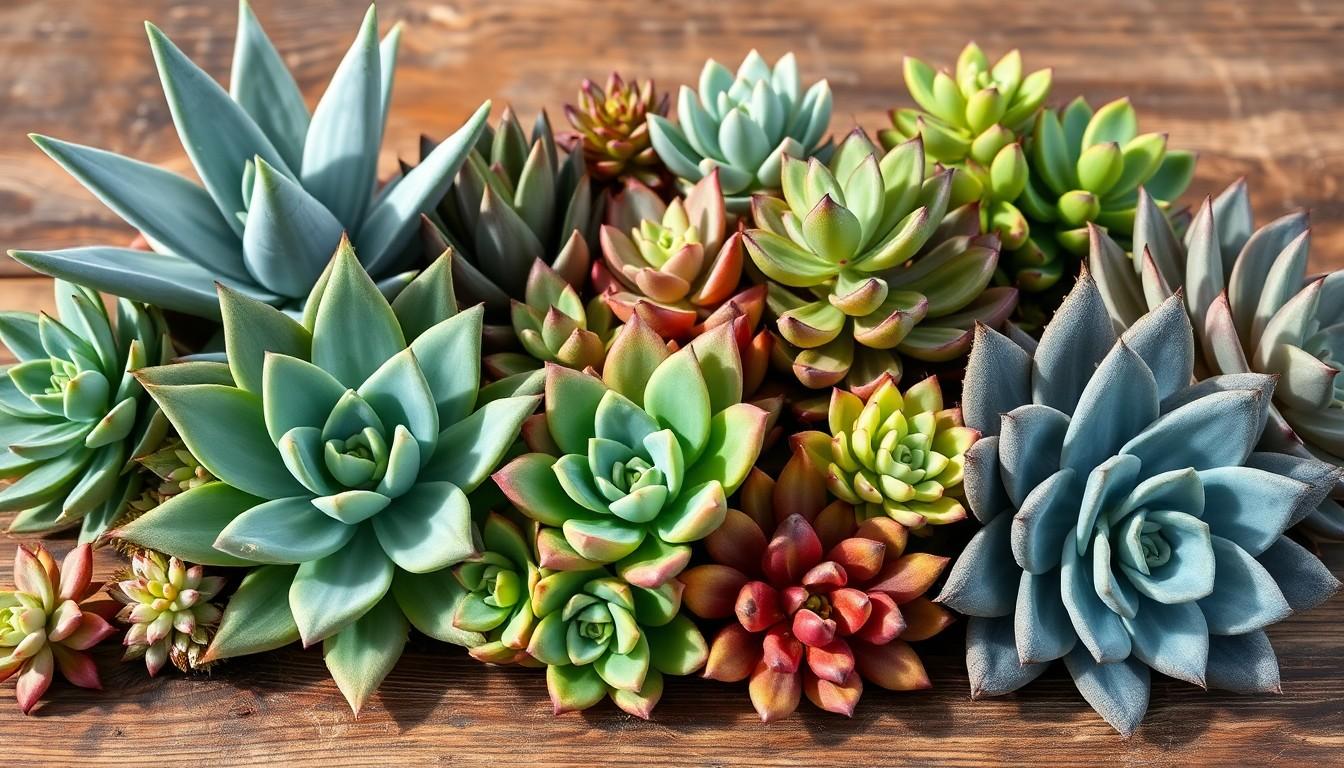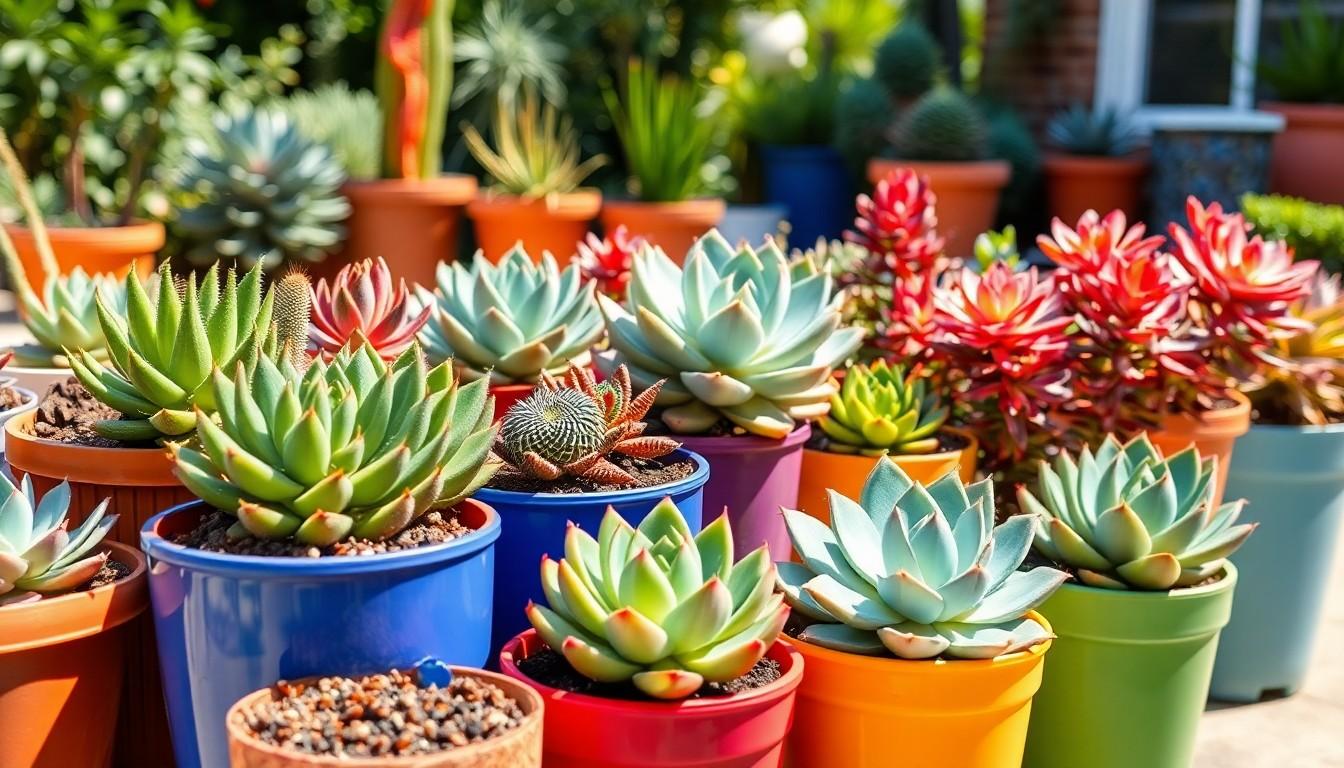Succulents have taken the world by storm, popping up in homes and gardens everywhere. With their vibrant colors and quirky shapes, they’re hard to resist. But wait—before you start munching on those plump leaves, let’s dive into the juicy question: are succulents edible?
Are Succulents Edible?
Succulents vary in edibility, with some species considered safe for consumption. For instance, Aloe vera, widely recognized for its medicinal properties, is also edible and often used in smoothies and health drinks. Another edible succulent is Hoodia gordonii, which has historically been used in traditional diets for its appetite-suppressing effects.
Certain varieties, however, pose risks if ingested. Euphorbia species contain latex, which can irritate the skin and digestive system. Individuals should exercise caution with unknown succulent varieties, as many ornamental types are not meant for consumption.
While some succulents serve culinary purposes, preparation may be necessary. Rinsing and cooking can improve safety and flavor. Chefs incorporate edible succulents into salads, desserts, and drinks, offering unique textures and flavors.
Research shows that a few succulents also provide health benefits. Nutritional content varies by species; for example, Aloe vera contains vitamins and minerals like vitamins A, C, and E, along with antioxidants.
Confirming the edibility of a succulent involves checking reliable sources or consulting with experts. Proper identification ensures safety, as some look-alikes may not be consumable. Each edible succulent brings potential benefits, attracting culinary enthusiasts and health-conscious individuals alike.
Common Edible Succulents

Certain succulents offer unique flavors and health benefits, making them appealing choices for culinary use. Exploring these edible options reveals interesting varieties.
Aloe Vera
Aloe vera stands out as a popular succulent known for its soothing properties. Known primarily for its gel, this plant serves various health purposes such as skin care and digestive aid. Its leaves contain a gel-like substance that adds a slightly bitter flavor, suitable for smoothies or desserts when prepared correctly. Prioritizing fresh, mature leaves ensures the best taste and texture.
Nopales
Nopales, the pads of the prickly pear cactus, offer a distinct taste reminiscent of green beans and a crisp texture. Often prepared grilled or sautéed, they elevate dishes like tacos and salads with their unique flavor. Rich in vitamins and minerals, nopales also provide dietary fiber. Handling them requires caution due to their spines, so proper cleaning is essential.
Sedum
Sedum, also known as stonecrop, comes in numerous varieties, some of which bear edible characteristics. This succulent presents a slightly tangy flavor, often used in salads or as a garnish. High in antioxidants, sedum adds nutritional value to meals. It’s crucial to identify the correct species before consumption, as not all are edible.
Potential Benefits of Eating Succulents
Eating succulents can provide various nutritional benefits. Many varieties contain essential vitamins and minerals that support overall health.
Nutritional Value
Succulents like Aloe vera and Nopales offer unique nutritional profiles. Aloe vera features vitamins A, C, and E, along with antioxidants that combat oxidative stress. Nopales are rich in fiber, vitamin C, and magnesium, promoting digestive health. Sedum, another edible succulent, contains antioxidants supporting cellular health. Including these plants in one’s diet introduces diverse nutrients often lacking in traditional foods.
Health Benefits
Incorporating succulents into meals can lead to several health benefits. Aloe vera aids in digestion and hydrates the skin, making it a popular choice in beauty products. Nopales possess anti-inflammatory properties that may assist in lowering blood sugar levels, beneficial for those managing diabetes. Sedum’s impressive antioxidant content helps reduce inflammation and supports heart health. Consuming these succulents can enhance overall wellness and introduce flavorful variety to diets.
Risks and Precautions
Understanding the risks associated with edible succulents is vital for safe consumption. Different succulent varieties can vary in toxicity.
Toxic Varieties
Certain succulents, like Euphorbia species, can be toxic. Common symptoms of ingestion include nausea, vomiting, and digestive discomfort. Identifying toxic varieties requires careful research. Not all spiky plants belong to edible families, so it’s important to verify the species before consuming. Reliable sources or local experts can help distinguish safe succulents from harmful ones. One crucial step involves checking for any specific characteristics that might indicate toxicity. Always err on the side of caution when trying unfamiliar plants.
Preparation Considerations
Preparation plays a significant role in safely consuming succulents. Rinsing edible succulents thoroughly removes dirt and potential pesticide residues. Cooking can also enhance safety and flavor. Boiling, grilling, or sautéing succulents eliminates certain harmful compounds. For example, raw Aloe vera gel requires careful removal of the outer leaf skin to avoid irritation. Following proper methods can improve the palatability of these plants. When incorporating succulents into meals, it’s possible to enhance health benefits while ensuring safety.
Conclusion
Exploring the world of edible succulents opens up a realm of culinary possibilities. With varieties like Aloe vera and Nopales offering unique flavors and health benefits, incorporating these plants into meals can enhance nutrition and enjoyment. However, it’s crucial to approach this exploration with caution. Proper identification and preparation are key to safely enjoying succulents. By consulting reliable sources and being aware of potential risks, one can confidently navigate this intriguing aspect of gastronomy. Embracing edible succulents not only adds variety to the diet but also celebrates the diverse benefits these plants can provide.

